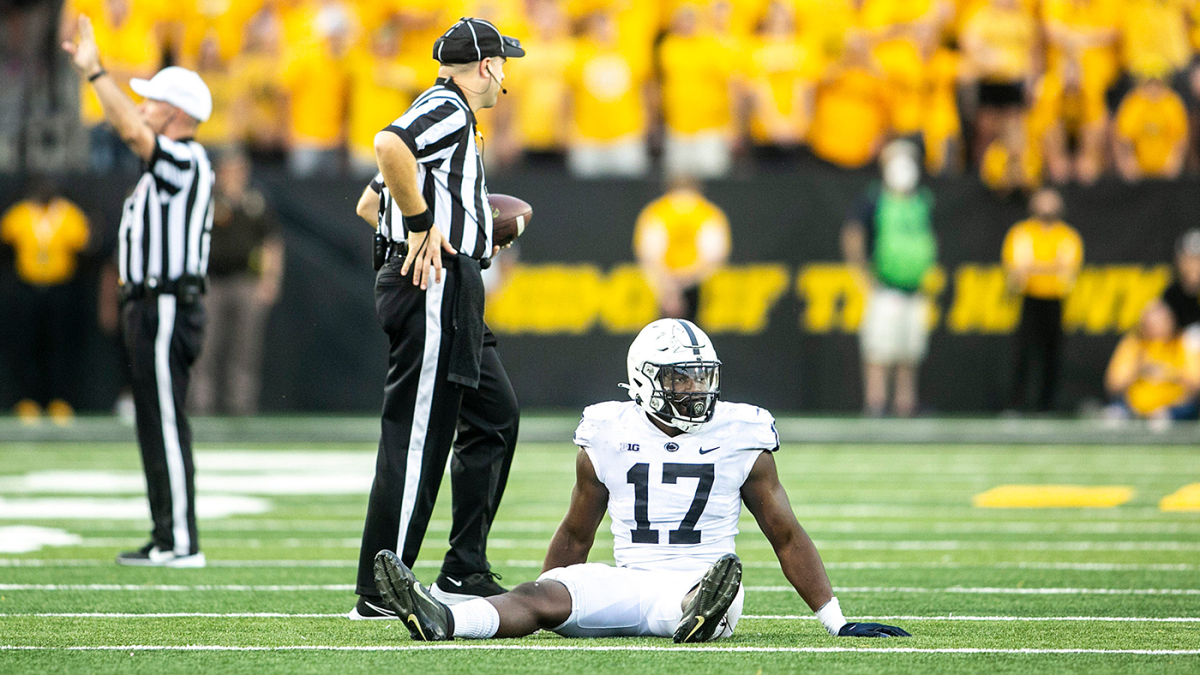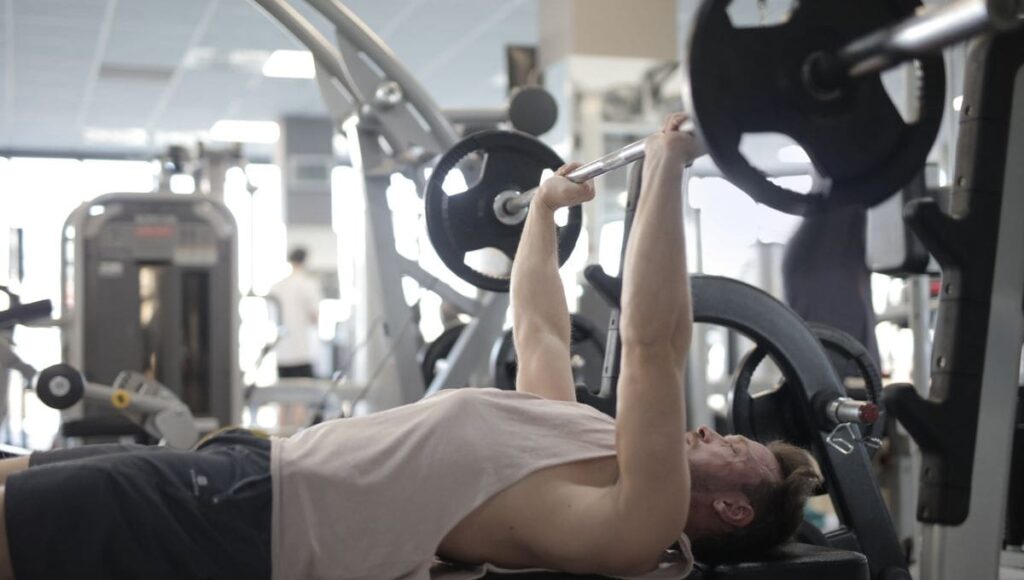A three-person committee quietly reviews what amounts to the biggest in-game ethics violation plaguing college football after each week of the season. They watch film of players pulling muscles, breaking bones and suffering concussions.
Then they must decide whether what they just saw was real or not.
The little-known group was assembled by the NCAA Football Rules Committee in the offseason as the next evolution in the fight against flopping. The term refers to the practice of faking injuries, usually on the part of a defense with the hopes of slowing down an opposing offense.
The tactic been around for years. It is wrong, distasteful and against the rules.
Just don’t try to convince yourself — or anyone else — you’ve actually seen flopping.
“It’s just hard to prove with any degree of certainty,” said Stanford coach David Shaw, a current board member of the American Football Coaches Association.
That lasting uncertainty is bugging the spit out of the game. It’s incredibly difficult to accurately measure flopping intent. Forget about counting violations like they’re penalties on a stat sheet.
Then there is the ethics of flopping. Some coaches like Shaw wouldn’t practice the piece of gamesmanship if their buyout depended on it. Others obviously relish the tactic, installing it in secret then breaking out a refined version to trick opponents and officials on Saturdays.
The game’s overseers are literally throwing up their hands in frustration over what to do.
“I say this and I mean it,” said Steve Shaw, national officiating coordinator and NCAA secretary-editor of the rules committee. “If you’re lying in bed tonight and come up with the perfect solution, call me — because we’re looking for it.”
Flopping is an accepted subterfuge in soccer. Defenders in basketball are rewarded for drawing sometimes-embellished charging fouls, though that sport has attempted to legislate it out of the game.
In American football, flopping is a version of cheating — or not — that is almost unique to the college version of the game. That raises issues with how to legislate whether a young athlete is actually injured.
“Is [flopping] good for college football?” Penn State coach James Franklin asked rhetorically earlier this month.
The answer is reflected in the work of that small committee established in the offseason to address flopping. It is made up of Steve Shaw and two others he will not name. Their charge is to review possible flopping situations, and if needed, alert the athletic director from the offending school.
That has happened twice this season, which speaks to the gray area of defining flopping. Any punitive action taken against a coach is up to the AD.
“What does it look like? What’s the appearance? There is never an absolute in this. You can’t watch video and know with absolute certainty, but you have a pretty good idea,” Shaw explained.
That was the response ahead of the 2021 season when the NCAA Rules Committee deemed flopping a point of emphasis. Flopping as mentioned in the NCAA rule book is officially called “feigning injury”. It’s considered a breach of “The Football Code”. Rule 5B under the heading “Injury Timeout” says “feigning an injury” is dishonest, unsportsmanlike and unethical.
The subject erupted again this month in the Penn State-Iowa and Ole Miss-Tennessee games. In each contest, Iowa and Tennessee fans reacted with boos at times when an opposing player went down.
That’s what caused Franklin to get so emotional. In that game, a 23-20 Penn State loss, he saw starting quarterback Sean Clifford (for that contest) and defensive tackle PJ Mustipher (for the season) suffer legitimate injuries.
“In my 12 years as a head coach has that [flopping] shown up?” an agitated Franklin asked reporters after the game. Franklin is also a member of the AFCA ethics committee.
So why is flopping — and the discussion surrounding it — seemingly so prevalent? Give coaches an opening, and they will exploit it.
The “strategy” goes back at least to the development of up-tempo offenses this century. A few years ago, Alabama coach Nick Saban, reacting to those hurry-up offenses, said, “Is this what we want the game to be?”
Not too long after, Saban became one of the leading practitioners of the up-tempo offense that flopping seeks to combat.
“[Flopping] has cropped up again the last couple of years after almost really almost disappearing for a few years,” David Shaw said. “I haven’t seen it that much in the Pac-12, but it is more prevalent.”
As far back as 2010, former California defensive assistant Tosh Lupoi was suspended for instructing players to fake injuries. In 2013, then-Washington coach Steve Sarkisian accused Stanford of doing the same. David Shaw responded angrily.
“We don’t fake injuries. We never have. We never will,” he said that October. “I don’t care what Steve Sarkisian thinks he saw.”
In recent years, rules were developed to allow defenses time to substitute if hurry-up offenses changed personnel on the fly. The reaction to that was offenses simply stuck with what they had on the field in order to fatigue defenses.
But flopping never left the public consciousness. And when it was egregious, the result is a general breaking of the internet.
Booing seems to be the newest wrinkle in how to define flopping. For some fans, it has come to the point that it is just assumed the opponent is going down on purpose.
“Basically, fans are pretty smart people, right?” Steve Shaw said. “They recognize if there is a feigning injury; that’s where they start booing. Now it’s just carried over to [that’s the default reaction even if players are actually injured].”
There is no across-the-board agreement on whether flopping is increasing, but there is a consensus that something must be done, probably as soon as the 2022 season. That’s an active year for the rules committee, which only makes major changes every other year.
Shaw’s committee was established as a general initiative to have conferences handle issues this season. Steve Shaw and David Shaw, plus AFCA executive director Todd Berry, all agreed suspensions for players and/or coaches could be the next move as soon as 2022.
“We kind of demanded we get some action in relation to something along those lines,” Berry said. “If there is no accountability and no consistency, then there is no rule.”
Short of those suspensions, there is talk of a general rule that keeps players out for a certain number of plays if they go down. Players already have to sit out one play if their helmet comes off. What would happen the first time a quarterback who twists an ankle and goes down — but can still play — must, by rule, sit out four plays with a minute left in a tied game?
Steve Shaw is worried that players will push through real injuries to avoid having to sit out because of a perception of flopping. For now, he and his committee huddle each week to nail down the true definition.
One thing is certain: Faking injuries remains a moving target.
“We haven’t hit the sweet spot just yet,” Shaw said. “It’s a very difficult one to find the sweet spot.”
https://www.cbssports.com/college-football/news/as-college-football-aims-to-curtail-flopping-officials-continue-throwing-up-their-hands-in-frustration/




:max_bytes(150000):strip_icc()/12-3-20-workout-GettyImages-1172178488-9ebe212a943a411ca8428974fb08aa9a.jpg)